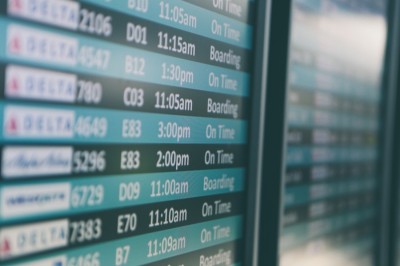The very first train journey in India took place in the year 1853, when a fourteen carriage long train drawn by three locomotives covered 21 miles between Bori Bunder (Bombay) and Thane. We have come a long way since then, and the huge strides that the Indian Railways has made over the last 160 years make me proud to call it as our own. The second largest rail web in the world (115,000 km of track and 19,600-odd trains), Indian Railways has employed over one million people and carries more than 23 million people daily.
But these stats are slowly losing their sheen. The rise of low fare airlines as well as improvement of roadways and preference for buses for the smaller routes has made the competition intense. IR has also come under fire repeatedly for its e-Ticketing system. The IRCTC website is one of the most frequented websites in the country, and yet the navigation is far from streamlined. The server errors and the slow speed are all indicators of a website still stuck in the early 2000s. And the lesser said about the Tatkal ticket booking system, the better. The process of procuring a Tatkal ticket is proving to be one of the most complicated and annoying tasks ever. The server gives up on many systems just seconds before 10 am, and comes back to life only when all the seats have gone.
The question is what can be done to arrest the slide downward, and get railways some of its sheen back? Big data can be one of the ways to answer it.
Thinking from the customers’ point of view, the most obvious concern is the ease (or the lack of it) of booking tickets. With reliable big data tools, it is possible for the system to handle more people logging on the website. These people should also get a hassle-free experience of booking their tickets. Measures to ensure this include analyzing the most frequented routes by a passenger and providing him/her the details for the same in a matter of 10 seconds or less, and getting an E-wallet system for all of the account holders. Data analytics will munch historical transactions for the specified customer and pre-empt the train and seat nos. chosen by him/her, thus saving loads of time for people who tend to travel a lot and usually prefer same trains/coaches.
Tatkal ticketing mechanism needs to be tweaked with in terms of technology used. With thousands of people logging in on the website at the same time, it is imperative that the system bears such shocks without crashing. The in-memory capacity for such cases needs to be increased, so that transactions don’t falter during the critical Tatkal hours.
The good news is, Indian Railways have been working on this for some time now and have taken steps in the right direction by employing CRIS (Centre for Railway Information Systems) for revamping the IRCTC website. The CRIS based their new technology on Pivotal GemFire, a distributed in-memory database which is part of Pivotal Big Data Suite. The resulting system was tested for a month and then officially launched in July 2014. The system has improved the stats significantly, with the load limit rising to 10000 from 2000 per minute. Time taken to book a ticket has come down considerably and the user authorization is done from in-memory data.
Yet, there is a lot of scope for improvement still. Tatkal tickets haven’t been any easier to get, and people still struggle with the navigation on the IRCTC website. The onus is on the authorities to not to let this drive fade away, and get Indian Railways back to the heights that it deserves. Here’s hoping that this time when we hop on, the next stop would be Big Data Junction.




![Ride-sharing impact on drunk driving in the US [Infographic]](https://crayondata.ai/wp-content/uploads/2022/05/driving-1.jpg)


